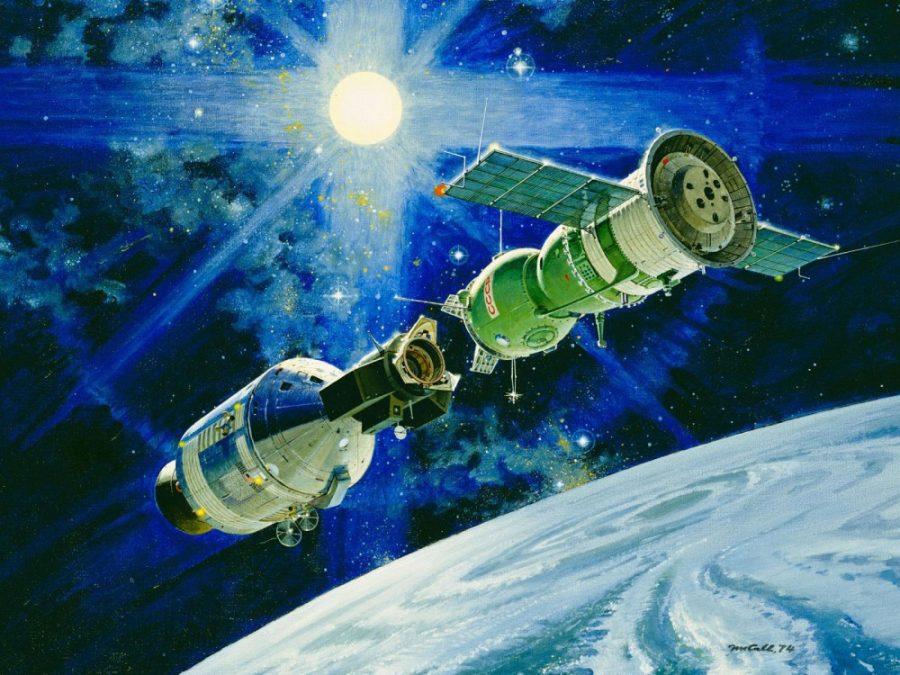Artists, scientists and bored college students on the Internet have something in common: They are all explorers.
If you consider yourself one of the above, you can have your very own artwork sent to space as part of the #WeTheExplorers campaign for the OSIRIS-REx mission. The UA leads this NASA mission, which aims to collect a sample of an asteroid and return it to Earth. Public art will be loaded onto a drive that will catch a ride on the OSIRIS-REx spacecraft that takes off for the asteroid Bennu in September.
Through the #WeTheExplorers campaign, NASA hopes to encourage people to reflect on what it means to be an explorer in any area of life. The project brings public attention to how creative scientists must be to answer questions about our solar system’s origins and the possibility of future collision of the asteroid Bennu with Earth—issues the OSIRIS-REx mission aims to address.
As the leader of the OSIRIS-REx mission, the UA boasts a team of scientists—or explorers—who work on everything from developing analysis software to making chemical sensor instruments.
“We are in the planning stages of the mission,” said Dr. Ellen Howell, senior research scientist in the spectral analysis and sample site selection working group. “We are taking laboratory measurements of materials that we think the asteroid might have on the surface, and ‘practicing’ [the analyses with original software].”
Howell de-bugs software and makes plots, yet she still sees lots of space for creativity. Howell said she and her team are often discovering new ways to look at the data or combining different types of data to help tell them more.
“Science requires a lot of creativity. It is basically solving puzzles,” Howell said. “The public should be involved and share the excitement of what we find.”
Howell believes the #WeTheExplorers is a great way for anyone to participate in cutting-edge science.
Dr. William Boynton, mission instrument scientist for OSIRIS-REx, said he “suspect[s] that most people do not appreciate how creative science can be.”
Boynton oversees the design, building and testing of all the instruments on board.
“The best scientists need to be very creative,” he said, adding that even he has recently had to exercise creativity. “[I’m] finding novel ways to change our plans so that we can do a much better job of pointing the instruments … to provide much better quality data.”
The UA Museum of Art is also participating in the #WeTheExplorers campaign. The museum hopes to send some pieces by Robert McCall up to Bennu. McCall was an artist for the NASA Art Program who died in 2010, so it seems appropriate to send his work to space.
Traveling beyond the fringes of Earth’s atmosphere won’t be a first for McCall’s work. He designed postage stamps that flew to the moon on Apollo 15 in 1971.
“McCall had a front row seat to some of the greatest moments in space exploration history,” said UA Art Museum archivist Jill McCleary.
McCall has artwork on patches for NASA missions and was the creative force behind some NASA space center murals.
Members of the public can view McCall’s work from March 26 through Nov. 6 at the art museum’s exhibit titled “McCall at the Movies: Selections from the Archive of Visual Arts.”
All art forms will be accepted to travel on OSIRIS-REx, from poetry and pictures to short movies and music, according to the #WeTheExplorers website.
Members of the public are invited to submit artwork online with the hashtag #WeTheExplorers, and they must tag
@OSIRISREx on Twitter or @OSIRIS_REX on Instagram. When you submit your masterpiece, remember to make sure that your account settings allow public access to your submission.
No matter whether your preferred artistic medium is natural dyes, fluorescent microscope images or the latest memes, you can express your inner explorer by submitting your art online before March 20, at 11:59 p.m. PST, or before the drive is full.
Follow the Daily Wildcat on Twitter.









